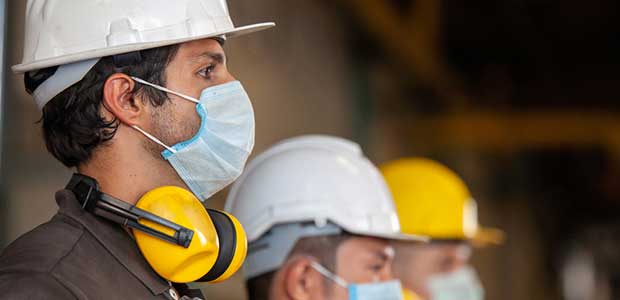
The Past, Present and Future of Respiratory PPE
What’s the importance of respiratory PPE then and now?
- By Sayanti Basu
- May 01, 2021
A little over a year ago, “respiratory PPE” was almost exclusively considered industrial terminology. Then came COVID-19. This deadly, highly contagious respiratory illness forced respirators and face masks into the forefront of our everyday vocabulary, dominating headlines and conversations daily.
With the pandemic came skyrocketing demand for respiratory PPE, resulting in a critical shortage of PPE in many industries, with healthcare being hit the hardest. As the demand for N95 masks catapulted, the supply and infrastructure for many of the manufacturers weren’t built or designed to keep up.
Additionally, the safety industry saw an influx of several new N95 manufacturers and suppliers, many of whom didn’t have an established background in PPE production. With this change in the competitive landscape and more manufacturers than ever before, PPE research and worker-focused innovation has become even more crucial to all industry players trying to stay in the game.
The Past
While PPE has been making headlines recently, respirators have been around for more than a century. What started from wet cloths and animal skins has evolved into a full range of respiratory protection solutions for a variety of applications, from military and first responders to industrial workers and healthcare professionals.
Why exactly do we need respiratory PPE? Simply put, respiratory protection exists to help protect humans from inhaling anything that is potentially harmful or dangerous in their environment. And COVID-19 isn’t the first outbreak of its kind—not even close. In the last decade alone, we’ve seen Ebola, Zika, SARS and Swine Flu, all of which pre-dated COVID-19 and had respiratory protection implications.
Here’s why: the aerosolization of viruses enables infection of a person through the respiratory system or the eyes. That’s why the filtering capacity of respiratory PPE is the most critical factor in protection from COVID-19 and other respiratory-born illnesses. It’s also why we’ve seen supply disappear from shelves and why more stockpiling and preparedness will become the norm on a go-forward basis.
The Present
Beyond organizational stockpiling, we’ve seen more mask wearers than ever before. While this practice may not hold as a permanent lifestyle change in the Western world after government mandates officially lift and we see life “go back to normal,” it’s a shared experience many of us will never forget.
Even with the rollout of the COVID-19 vaccine, the need for efficient respiratory PPE remains high and continues to grow. As an industry, we can’t expect demand to ever return to 2019 levels. More than ever, stockpiling inventory will be more prevalent across industries because society will not want to risk getting caught short again. For the industrial and healthcare workers who are required to wear some type of mask, reusability is an important consideration in a long-term respiratory protection program. Beyond the disposable respirators, Air Purifying Respirators (APRs) and Powered Air Purifying Respirators (PAPRs) are another convenient and efficient option. Both are reusable, offering sustainability and a higher level of protection than disposables masks. They have more give, so they’re more comfortable, and they can be cleaned and re-used.
PAPRs specifically are battery-powered, all-in-one integrated units with a battery and blower motor contained in compact casing so they can be worn comfortably. Plus, these respirators (when worn with a loose-fitting hood) don’t require a fit test and can help keep workers cool during a long shift.
The Future
With continuous and growing demand, and a much wider range of end users, manufacturers have turned their attention to the next generation of respiratory PPE. The focus of innovation should be on the next level of comfort, an important factor in the correct and continued usage of respiratory mask protection for our frontline workers. Comfort has a variety of implications, including breathability, exhalation and lightweight material. If PPE isn’t comfortable, workers won’t want to wear it and a respirator only works if it’s used—and used properly.
The future of respiratory protection lies in the ever changing needs of the end user. Voice of Customer (VOC) research is critical to the future of product development to understand from our workers first-hand what they need in their PPE. From insights about breathability, comfort, and fit tests, we should always think, front and center, about the needs and experience of the end user in our product development. How do they define comfort? What are some nuances they’d like in terms of design? We develop prototypes, then further tests with end users, assimilating the results into each iteration of our next generation products.
At every stage, including R&D, material scientists, mechanical engineering to supply chain, it’s vital to bring end users in at each and every checkpoint. Their input allows experts to elevate the product. Because even with our rich legacy, we never become complacent or design products in a silo. Our research and ultimately, our product development, is by the users, for the users.
At the end of the day, the future of safety is dependent on workers having a future of their own. In this future, safety solutions adapt to changing needs and environments. They increase productivity and efficiency, instead of getting in the way. And above all, they don’t stop working until the last worker clocks out and returns home.
As an industry, we have accomplished so much in the last century. But what’s to come in the next century?
This article originally appeared in the May 1, 2021 issue of Occupational Health & Safety.